
About this Website
This website describes The £sd Postage Stamps of Great Britain Issued in Booklets, which were issued from early in the 20th century until decimalisation in 1971. The site grew from a project to document the Dubarry coloured adverts, providing a convenient place to accumulate and share information. Plating the adverts proved quite challenging and, although much progress has been made, is still incomplete and anyone with an interest is encouraged to contact us. The plating process involved learning about many aspects of booklet manufacture, and that information was also added. The site has grown to cover pre-decimal (£sd) booklets in general, but a preference to the Dubarry adverts still shows through.
Information is organised differently from the main references:
British Stamp Booklets by Jean Alexander and Leonard F. Newbery, published by the GBPS;
Great Britain Specialised Stamp Catalogue volumes 2 & 3, published by Stanley Gibbons.
This site is organised chronologically, first by reign, then by issue within reign (BSB organises by Post Office series; SG organises by reign, then by value within reign). This system keeps related booklets together more as it seems a collector would, for example the two Silver Jubilee booklets are together, rather than the 2s and 3s being in different chapters or sections.
As with other sites in the same series, emphasis has been placed on providing good quality colour images, and as many as possible, with links to see more images of similar types. The goal is to show all editions of all booklets, but that may take a little longer.
The Stanton Card Index needs special acknowledgment. Lt-Col. J. B. M. Stanton was a collector and author, writing articles for the British Philatelist from 1940. He joined Chas Nissen & Co in 1950 where he had access to an extraordinary number of booklets and created a card index to record booklet contents. Many booklets have since been broken apart for their panes, and so the index provides information on some that no longer exist. The index has been transcribed and can be downloaded as an Excel file via the link below.
About the Images
The images on this website are from scans, some of my own collection, but many have been supplied by other collectors and dealers, and some are taken from auction archives with permission from the auction houses. All are copyright, see the notice below.
Most images have been improved with Photoshop. They have been straightened, cropped, etc, and minor damage has been repaired. In some cases, where the source material is not available or of poor quality, images have been created. Such images are identified by the word “reconstruction”.
Thanks to the following collectors (in alphabetical order):
| Eric Abraham | Jean Alexander | Jack Clark |
| Hanns Fasching | Ian Harvey | Alan Mynott |
| Alan Musry | Harvey Russell | Tony Walker |
and also to the following for allowing use of their images:
Andrew G Lajer
Candlish McCleery Ltd
Grosvenor Philatelic Auctions
Spink & Son
and to The Postal Museum. None of the images on this site are from The Postal Museum but their documents and records were of great help.
Copyright Notice
This website and contents are copyright © 2012-2024, all rights reserved. Any use, redistribution, or reproduction for other than personal non-commercial reasons is prohibited. In addition, images from auction archives are protected by the copyright of the auction houses.
The booklet and booklet pane catalogue numbers used are those in volumes 2 and 3 of the Great Britain Specialised Stamp Catalogue, for which the copyright belongs to Stanley Gibbons Limited.
Let’s begin with some booklet history …
Early Booklet Designs
The first Post Office booklet was issued during the reign of King Edward VII, on 16 March 1904, but books of stamps were proposed during the reign of Queen Victoria.
1880 Inland Revenue Essay
The first essay for a book of stamps was the result of a suggestion to the Board of Inland Revenue. The Board sent the suggestion to De La Rue in a letter of 4 Nov 1878. On 23 Feb 1880 the booklet shown below was sent from De La Rue to the Board. The stamps were sewn to the cover through the horizontal perforations between top and bottom rows.
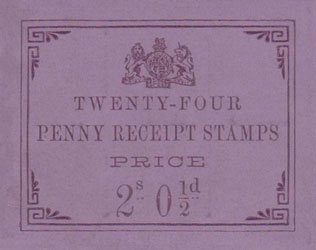
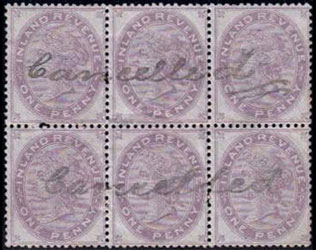
An extract from De La Rue’s correspondence books:
The Board of Inland Revenue wrote on this date that it had been suggested to them that “it would be a convenience if 1d Inland Revenue adhesive stamps could be obtained by the Public made up book-wise, the book to be of such a size as could be conveniently carried in the breast-pocket.”
The Board asked us to “furnish them with some information as to the cost of making up stamps in the form of books containing say 2/- worth each, and with your general observations in regard to this suggestion.”
We show the top block of six 1d Inland Revenue stamps detached from the book submitted on Feb. 23, 1880 containing 24 stamps, all held in position by stitching through the middle perforation under each stamp in the top row. In the accompanying letter we quoted 34/- per thousand for the preparation of such books, delivered free to Somerset House, expressing the belief that if the 1d Postage as well as these 1d Receipt stamps “were issued in such books they would meet with a favourable reception from the Public”.
1885 Cheque Book Essays
On 4 Feb 1885, following a suggestion by Mr Unett Coates, De La Rue submitted cheque book style essays in orange-brown, deep grey, and grey-blue, each containing eight panes of 15 blank labels, priced at 10s 0½d.
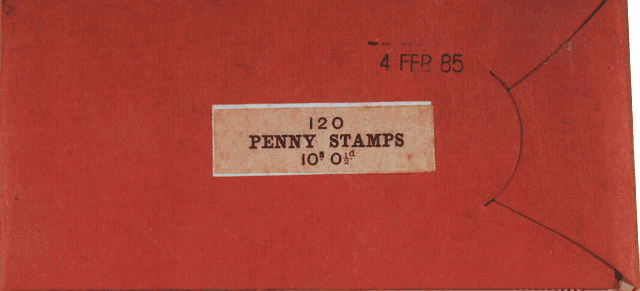
The Post Office replied on 4 May 1885 saying that it was not clear if the ½d surcharge was sufficient, and that these essays were somewhat unsightly and wondered if De La Rue could improve them. On 15 June 1885 a similar essay in yellow was submitted, this time priced at 10s 1d, and with a decorative border around the label.
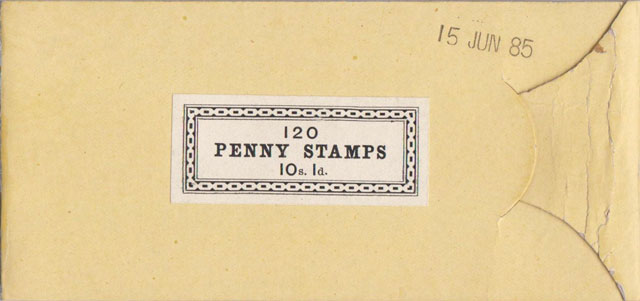
The panes of 15 blank labels were glued in place by their selvedge on the left.
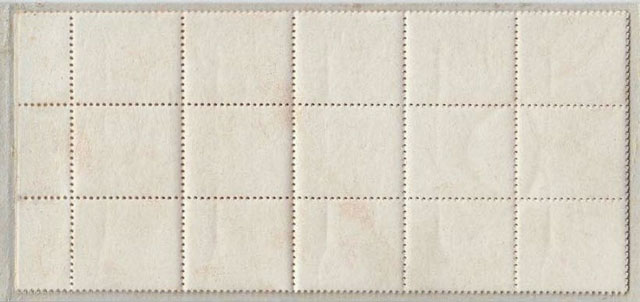
1891 Memoranda Booklet
A memoranda booklet containing a single penny lilac was available from vending machines. It had 64 pages including a variety of adverts, note pages, postage rates, and an 1891 calendar. The stamp was perforated “SDS” (Stamp Distribution Syndicate).
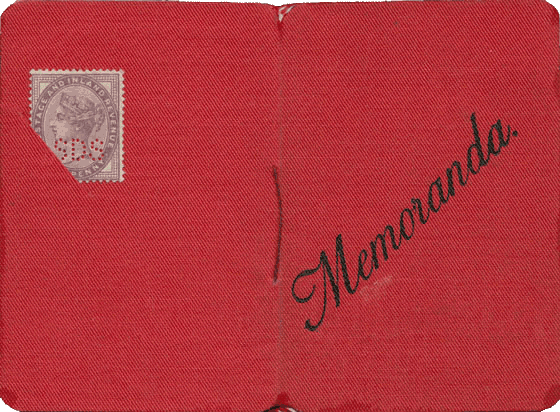
An extract from The Times, 22 July 1892:
About a year since we noticed the initiatory stage of an experiment which was then about to be made in the public interest by affording means of obtaining postage stamps at all hours of the day and night, and therefore at a time when unobtainable elsewhere. As the matter stood then, an automatic machine had been devised by which a postage stamp and a small memorandum book in an envelope were delivered, after inserting a penny in a slot and pulling a handle. The Postmaster-General has accorded permission to the Stamp Distribution Syndicate, of 11, Queen Victoria Street, London, to place ten of these machines in various parts of the Metropolis, in conjunction with the pillar letter-boxes.
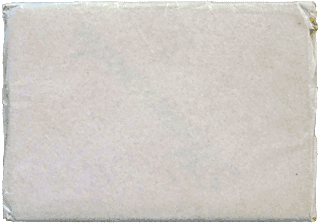
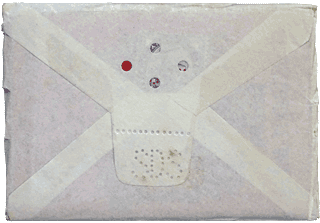
A second vended booklet was issued in 1893 by the Stamp Distribution Company. It was inscribed “Memo Book” and also contained 64 pages but with an 1893 calendar. The penny lilac was perforated “SDC”.
1895 Luxembourg Booklet
Luxembourg is often cited as the first country to issue booklets in 1895. There is some question about this as the stamps used were the 1895 Grand Duke Adolphe issue, but made up into booklets possibly as late as 1906. Other early booklets include USA and Canada in 1900 and Netherlands in 1902.
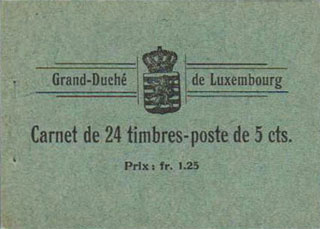
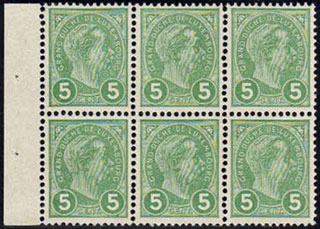
1903 “No Value” Essays
Thought to be 1903 or earlier, these are De La Rue essays or samples with plain pink or blue covers, containing four or more panes of dummy stamps in dull purple or green, with or without transparent interleaves, bound with staples at the left or right. Similar trials were made for overseas contracts.
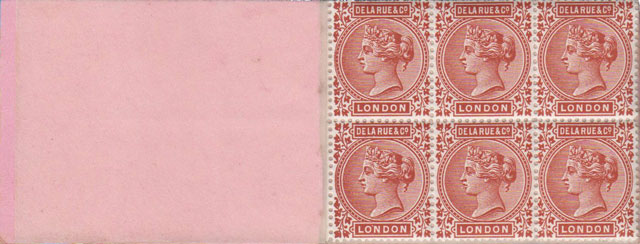
Dull purple stamps bound at the left.
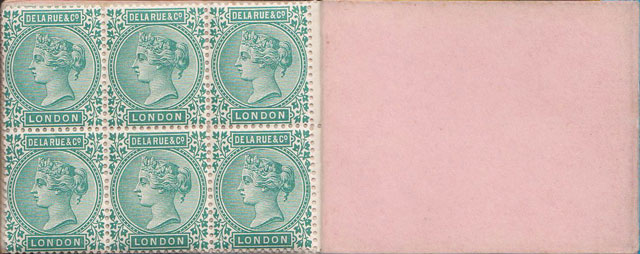
Green stamps bound at the right.
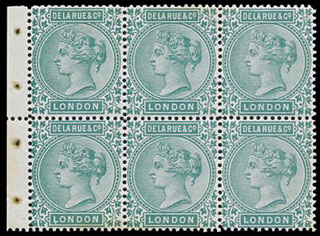
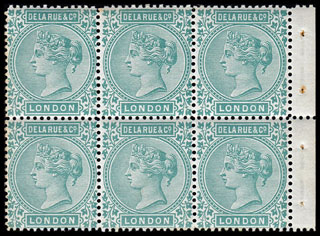
Binding margin at left or right.